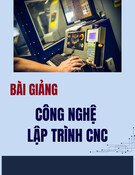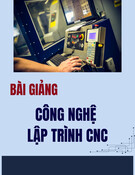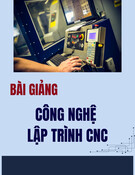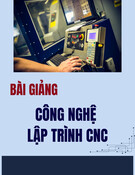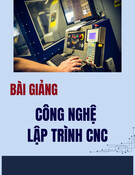
* Corresponding author. Tel.: + 216 98 414 868
E-mail address: abdrebai1953@gmail.com (A. Rebaï)
© 2019 by the authors; licensee Growing Science, Canada.
doi: 10.5267/j.dsl.2019.4.005
Decision Science Letters 8 (2019) 471–482
Contents lists available at GrowingScience
Decision Science Letters
homepage: www.GrowingScience.com/dsl
A multi-attribute ranking approach based on net inferiority and superiority indexes, two
weight vectors, and generalized Heronian means
Moufida Hidouria and Abdelwaheb Rebaïa*
aLaboratory of Modeling and Optimization for Decisional, Industrial and Logistic Systems (MODILS), Faculty of Economics and
Management, University of Sfax, Airport street, Km 4, P.O. Box 1088, Sfax 3018, Tunisia
C H R O N I C L E A B S T R A C T
Article history:
Received November 18, 2018
Received in revised format:
December 28, 2018
Accepted April 21, 2019
Available online
April 27, 2019
In this paper, we propose a three-phase multi-attribute ranking approach having as outcomes of
the modeling phase what we refer to as net superiority and inferiority indexes. These are defined
as bounded differences between the classical superiority and inferiority indexes. The suggested
approach herein named MANISRA (Multi-Attribute Net Inferiority and Superiority based
Ranking Approach) employs in the aggregation phase a bi-parameterized family of compound
averaging operators (CAOPs) referred to as generalized Heronian OWAWA (GHROWAWA)
operators having the usual OWAWA operators as special instances. Note that the new defined
operators are built by using a composition of an arbitrary bi-parameterized binary Heronian mean
with the weighted average (WA) and the ordered weighted averaging (OWA) operators. Also,
note that the current developed MANISRA method generalizes the superiority and inferiority
ranking (SIR-SAW) method which is known to coincide with the quite popular PROMETHEE
II method when the net flow rule is used. With net superiority and inferiority indexes and
GHROWAWA operators, we are better equipped to rank rationally pre-specified alternatives.
The basic formulations, notations, phases and interlocking tasks related to the proposed approach
are presented herein and its feasibility and effectiveness are shown in a real problem.
.Science, Canada2018 by the authors; licensee Growing ©
Keywords:
Multi-attribute ranking
Averaging operator
Generalized Heronian mean
Inferiority
Superiority
1. Introduction
Quite often the decision processes of multi-attribute decision making (MADM) methods are composed
of three phases, i.e., modeling, aggregation and exploitation phases. In the modeling phase, marginal
utility functions, local priorities, regret and rejoicing values, degrees of preference, degrees of
satisfaction, inferiority and superiority indexes, etc., are produced to serve as input arguments in the
aggregation phase. In the present work, we advocate the use of net inferiority and superiority indexes
obtained by from the traditional indexes introduced by Xu (2001). The new defined indexes are reliable
and more-informative than the usual ones. In the aggregation phase, averaging operators are used to
summarize the input arguments produced in the modeling phase. Different types of averaging operators
could be found in the academic literature: (1) simple averaging operators, e.g., the weighted average
(WA) operator, the weighted geometric averaging (WGA) operator, the generalized weighted
averaging (GWA) operator, the quasi-weighted averaging (Quasi-WA) operator, the ordered weighted
averaging (OWA) operator (Yager, 1988; Yager & Kacprzyk, 1997; Yager et al., 2011; Emrouznejad
& Marra, 2014), the ordered weighted geometric averaging (OWGA) operator (Xu & Da, 2002), the

472
generalized ordered weighted averaging (GOWA) operator (Yager, 2004), the quasi-ordered weighted
averaging (Quasi-OWA) operator (Fodor et al., 1995), and (2) compound averaging operators
(CAOPs), e.g., the weighted ordered weighted averaging (WOWA) operator (Torra, 1995), the hybrid
averaging (HWA) operator (Xu & Da, 2003), the double weighted ordered averaging (MO2P) operator
(Roy, 2007), the ordered weighted averaging-weighted average (OWAWA) operator (Merigo, 2012),
the semi-uninorm based ordered weighted averaging (SUOWA) operator (Llmazares, 2015), etc.
The above CAOPs unifying the operators WA and OWA in the same formulation exploit the so-called
importance weights (or, attribute weights) and preferential weights (or, rank weights) in order to make
the most of the aggregation mechanisms of both operators. In addition, according to Reimann et al.
(2017), the operators WA and OWA represent differently the preferences of decision makers. It is
equally important to remind that the importance weights are associated with WA and that the
preferential weights are associated with OWA. Additionally, according to Labreuche (2016), the
aforementioned types of weighting coefficients could be provided by decision makers. It is also of
crucial importance to point out, at this stage, that the validity of the results of most of the CAOPs so far
mentioned has often been questioned, mainly because of major violations of desirable 'natural'
requirements (e.g., endpoint-preservation, monotonicity in the arguments, monotonicity in the weights
and internality, etc.). Note that OWAWA operators (see Merigo (2012) for a detailed presentation) are
appealing because they satisfy all the desirable requirements, and especially because they take into
account the degree of importance that each operator has in the formulation of the resulting CAOP.
Thus, in order to summarize the aforesaid net inferiority and superiority indexes in the aggregation
phase of our approach, we advocate the use of a bi-parameterized family of CAOPs which will be
referred to as generalized Heronian OWAWA (GHROWAWA) operators having the OWAWA
operators as special instances (see Subsection 2.2). In exploitation phase, a choice, ranking or sorting
problem could be envisaged (Roy, 1996). In this work, we deal with the crisp multi-attribute ranking
problem of pre-specified alternatives.
The central originality of this work is to demonstrate how the new defined net superiority and inferiority
indexes, two weight vectors and the bi-parameterized generalized Heronian means can be put together
to establish an original and useful multi-attribute ranking approach which generalizes the SIR-SAW
and PROMETHEE II methods.
Thus, this work is intended to develop a ranking approach herein referred to as Multi-Attribute Net
Inferiority and Superiority based Ranking Approach (MANISRA) which exploits in the aggregation phase
the above-mentioned CAOPs to summarize the aforesaid net superiority and inferiority indexes
produced in the modeling phase to get the overall net superiority and inferiority indexes from where
the choice-worthiness grades of predetermined alternatives are derived. The remainder of this paper is
structured as follows. In the Sections 2 and 3, we present the material essential for the understanding
of the basic philosophy of the MANISRA method. In Section 4, we illustrate the suggested approach
by means of a real-world logistics service provider (LSP) ranking problem. And, in Section 5, we
conclude the article with some remarks and ideas for future research.
2. Mathematical tools
2.1 Basic problem
To begin, the problem formulation can be set out as follows.
Given:
1. mfeasible alternatives ,1,…,,
2. nrelevant attributes ,1,…,,
3. A nm performance table, ][ ij
a, where ij
adenotes the attribute value of alternative i
Awith
respect to attribute ,
4. An importance weight vector ,,…, satisfying ∈0,1 and ∑1
,

M. Hidouri and A. Rebaï / Decision Science Letters 8 (2019)
473
5. A preferential weight vector ,,…, such that ∈0,1and ∑1
,
6. Aparameters∈0,1,
7. Aparameterω∈0,∞.
Goal:
Rank the predetermined alternatives using their net inferiority and superiority indexes along with
CAOPs whose formulas will be set out (hereafter, Subsection 2.3).
2.2 Definitions related to input arguments
2.2.1 The generalized criteria
Let lj
a and kj
a be the respective attribute values of two alternatives l
A and k
A with respect to a given
cardinal attribute , then the difference kjljlk aad
is meaningful. Additionally, given
lkj df an
appropriate generalized criterion function (Brans & Vincke, 1985; Brans et al., 1986), the intensity of
preference of l
Aover k
Agiven is
klj AAP ,where
., lkjkjljjklj dfaafAAP
Also, if
stands for the set of real numbers, the function
lkj df is a non-decreasing function from to [0,1]
such that
0
lk
df for .0
lk
d Six generalized criteria were introduced in (Brans & Vincke, 1985;
Brans et al., 1986) as shown in Table 1. The parameters Δ and Δ' presented in Table 1 are respectively
preference and indifference thresholds.
Table 1
Generalized criteria
Type 1 True-criterion Type 2 Quasi criterion Type 3 Criterion with linear preference
00
01
)(
ik
ik
ikj dif
dif
df
ik
ik
ikj dif
dif
df 0
1
)(
00
0
1
)(
ik
ik
ik
ik
ikj
dif
dif
d
dif
df
Type 4 Level criterion Type 5 Criterion with linear Type 6 Gaussian criterion preference indifference area
'
'
0
2
1
1
)(
ik
ik
ik
ikj
dif
dif
dif
df
'
'
'
'
0
1
)(
ik
ik
ik
ik
ikj
dif
dif
d
dif
df
00
0)
2
exp(1
)( 2
2
ik
ik
ik
ikj
dif
dif
d
df
2.2.2 Net inferiority and superiority indexes
First, we remind below the definitions of inferiority and superiority indexes introduced by Xu (2001),
then we define the net inferiority and superiority indexes .
Definition 2.1 The inferiority index (I-index)
ij AI and superiority index (S-index)
ij AS are
respectively defined by
ki
m
k
j
m
K
ijkjj
m
K
iKjij dfaafAAPAI
111
,, (1)
ik
m
k
j
m
K
kjijj
m
K
Kijij dfaafAAPAS
111
,. (2)
Using the so defined indexes, we now introduce the net inferiority index (net I-index) ∗(), and the
net superiority index (net S-index) ∗() as follows.

474
Definition 2.2 The net I-index and net S-index of alternative with respect to attribute are
respectively defined by
I∗(A) IA⊖SA, (3)
S∗(A)SA⊖IA, (4)
where ⊖denotes the bounded-difference operator defined by Zadeh (1975).Note that the net I-index
is a cost indicator (the lower the better), whereas the net S-index is a benefit indicator (the higher the
better). In addition, they lie in the closed real interval І 0, m-1].
From now on, we will associate with each alternative Ai a pair of descriptive n-dimensional profiles:
1. The profile of net I-indexes
I∗(A)I
∗A, I
∗A,…,I
∗A (5)
2. The profile of net S-indexes
S∗AS
∗A, S
∗A,…,S
∗A (6)
2.3 Definitions related to averaging aggregators
Assume = (1, 2, …, ) and y = (y1, y2, …, y) ∈І,to produce a summary of the components of
the n -vectors x and y, we will be exclusively concerned with using some specific CAOPs. Thus, we
next turn our attention to a presentation of the CAOPs of interest.
2.3.1 Averaging operators involved
The inner averaging operators considered here are the familiar weighted average (WA) operator and
the non-conventional ordered weighted averaging (OWA) operator (Yager, 1988). The weighted
average (WA) operator is one of the most popular aggregation operators found in the literature. It has
been extensively used in a great number of applications including statistics, economics and engineering.
It can be defined as follows.
Definition 2.3 A weighted average (WA) operator acting on the interval І having an associated n-
dimensional importance weight vector P is defined to be the mapping WA:І→Іsuch that
WAxpx
.
(7)
The ordered weighted averaging (OWA) operator is an aggregation operator that provides a
parameterized family of aggregation operators between the minimum and the maximum values. It can
be defined as follows.
Definition 2.4 An ordered weighted averaging (OWA) operator acting on the interval І and having
an associated n-dimensional preferential weight vector W is defined to be the mapping OWA: І→
І such that
OWAxwx
,
(8)
where x stands for the jth largest element among the xs. Let us now recall the definition of the
OWAWA operator introduced by Merigo (2012).

M. Hidouri and A. Rebaï / Decision Science Letters 8 (2019)
475
Definition 2.5 An OWAWA operator acting on the interval Іand having a compensation parameter ,
an n-dimensional importance weight vector P, and an n-dimensional preferential weight vector W is
defined to be the mappingM
,:І→Іsuch that
M
,xβOWAx1βWAx. (9)
Before introducing the generalized Heronian OWAWA operator, we need to recall the definition of
generalized Heronian mean in the sense of Janous (2001).
Definition 2.6 Let a and b be two non-negative real numbers. The generalized Heronian mean
HMa,b) of a and b is defined by
HMa,b) √
,0∞
√, ∞
(10)
So, we now can introduce what we call a bi-parameterized generalized Heronian mean as follows.
Definition 2.7 Let a and b be two non-negative real numbers. The bi-parameterized generalized
Heronian mean HM,a,bof a and b is taken as
HM,a,b
,0∞
√ , ∞
(11)
and, based on Definition 2.7, we now can define the generalized Heronian OWAWA (GHROWAWA)
operator as follows.
Definition 2.8 A generalized Heronian OWAWA (GHROWAWA) operator acting on the interval І
and having two parameters and ω, and an n-dimensional importance weight vector P, and an n-
dimensional preferential weight vector W is defined to be the mappingH,
,:І→Іsuch that
Hβ,ω
,x) HM,OWAx,WAx (12)
Let us explain briefly the working of the above CAOP. The CAOP Hβ,ω
, is built as the composition of
an arbitrary bi-parameterized binary Heronian mean with the classical weighted average ()
operator and the non-conventional ordered weighted averaging () operator. More precisely, the
aggregation arguments and the importance weights are "synthesized" by applying an operator. In
addition, the aggregation arguments and the preferential weights are "synthesized" by applying an
operator. Then the values returned by these two averaging operators are merged by means of a
binary bi-parameterized Heronian mean. Note that the above CAOP has, among others, the following
special cases:
H,
,x) WAx, if = 0.
H,
,x) OWAx,if = 1.
H,
,x) Mβ
,x, if = 0.
H,
,x
, if =
.
H,
,x) OWAxWAx , if = ∞.
It is note-worthy at this level that the GHROWAWA operators considered above fulfill, among other
possible properties, the following desirable 'natural' requirements:

![Tài liệu huấn luyện An toàn lao động ngành Hàn điện, Hàn hơi [chuẩn nhất]](https://cdn.tailieu.vn/images/document/thumbnail/2025/20250925/kimphuong1001/135x160/93631758785751.jpg)
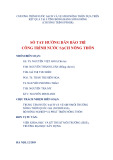
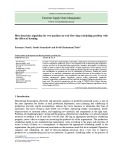

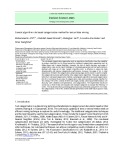
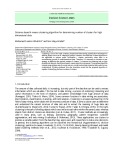
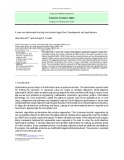
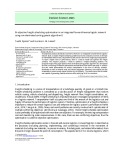
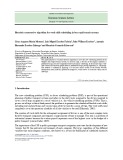


![Bài tập tối ưu trong gia công cắt gọt [kèm lời giải chi tiết]](https://cdn.tailieu.vn/images/document/thumbnail/2025/20251129/dinhd8055/135x160/26351764558606.jpg)




